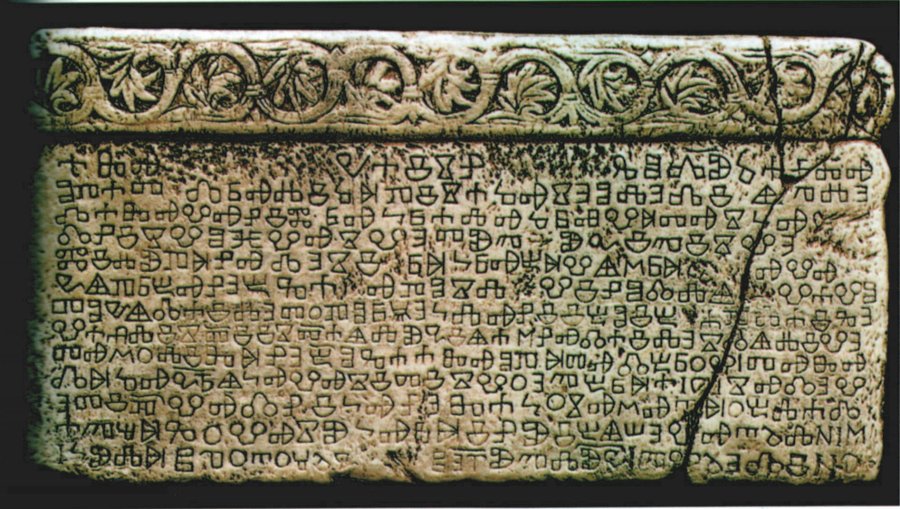It's Cyril & Methodius Day 2024! Here's the usual thread to wish other people a happy Cyril & Methodius day and let us know what you've been up to regarding writing, alphabets, and languages on this particular year's celebration.
If you want to donate to charity today, Room to Read's direct donation link here. Please donate to them, they're a very good cost efficient charity for supporting literacy in developing countries.
FAQsWhat is Cyril and Methodius Day?As celebrated by Exilians and many others, Cyril and Methodius Day is a festival of literature, learning, languages, and linguistics. It's an alternative or additional celebration to the feast day of Saint Valentine - not as an "anti-Valentine's" project, but providing people another choice of celebration for the day.
How do I celebrate it?- Read a book.
- Hug a friendly linguist, and tell them how much you appreciate alphabets.
- Tell other people it's Cyril and Methodius day. Spread the word!
- Recommend good books to a friend. Make ALL the reading happen!
- Celebrate and discover more about European, and particularly eastern European, culture, writing, food, arts, and more.
- Do some work on learning a language.
- Talk to your international friends from Europe (and beyond).
- Do conlanging/make a new alphabet!
- Donate to a reading-related charity
So, uh, why do this?- It's fun! It's that extra bit of excuse and motivation to get on and do the language learning you wanted, or finish that book chapter.
- The world needs people learning about, and reaching out to, each other more than ever. Now is absolutely the time to do that.
- For people who are alienated by the commercialisation of Feb 14, or otherwise don't want to or can't celebrate it, finding something else positive to do and celebrate is SO much better than just sitting around being glum.
- It's inclusive: not everyone has or wants romantic partners for Feb 14, but just about everyone can communicate and learn.
- It helps people. Raising money for charity has been a part of how we celebrate Cyril & Methodius day for some years now, and that's raised worthwhile sums to help spread education to those who need it most.
- It shines a light on two really interesting historical characters who, whilst little known in many countries, had an impact that especially in the form of the Cyrillic alphabet, named after Cyril, is noticeable to this day.
- Books really are just plain excellent.
Is religion important here?We've claimed Cyril and Methodius' Day in an entirely non-denominational fashion, as has happened to many other Saints' Days, so there is no religious prerequisite for celebrating it. Cyril and Methodius were of course Christians, as were almost all people in their cultural place and context, but their work included many fields combined with or outside purely religious functions including diplomacy, law, and languages. We of course respect that these saints do have a particular religious context and function for people in some traditions, but we think it's possible to celebrate some of the ethos of the things for which they are patrons without being disrespectful to those contexts.
You've got the date wrong!Cyril and Methodius' Day is celebrated on Feb 14 in the Catholic and Anglican traditions - the Orthodox church and others celebrate their feast at other times of year.
Why can't you just celebrate Valentine's Day?Not everyone wants to, for all sorts of reasons. Valentine's Day tends to involve heavy commercial promotion of a certain type of romantic relationship that just doesn't suit everyone - some people are happy being single, or indeed are aromantic, or asexual, have other reasons for not wanting to celebrate, or just don't want to define their relationships and celebrate them in the way that Valentine's Day now has a tradition of promoting. Other people may just decide that Europe, reading, and languages are something they value and want to celebrate more than - or alongside - the alternatives. There's no problem mixing the festivals either - languages and love can always be intertwined! Cyril and Methodius day offers a choice of festival that embraces this and can give people a fun and interesting rationale for something different to do on Feb 14.
Who were Cyril and Methodius?Cyril and Methodius, apostles to the Slavs, were Greek saints in the ninth century AD. They're primarily known for the creation of the Glagolitic alphabet, the first alphabet designed specifically for slavic-family languages, and the ancestor of the modern Cyrillic (which is named after Cyril). They accomplished numerous missions on behalf of the Byzantines, including to the north of the Black Sea, though most famously to Moravia (modern Slovakia). There they worked to create and spread a uniquely Slavic Christian tradition, drawing on both the Latin and Greek traditions of learning but with many unique elements. Despite Moravia moving into the Latin sphere after their deaths, their followers moved to other Slavic nations, especially Bulgaria, from which their work influenced many eastern Europeans to this day. They are patron saints of Europe in the Catholic church.
Can I get a lest text based explanation of all this?If you want a video explanation of what's going on here, I
made one in 2015.












